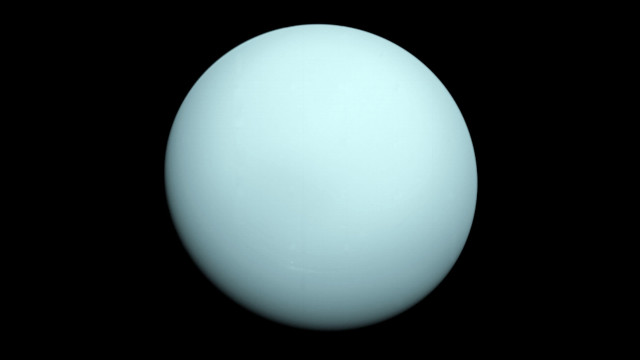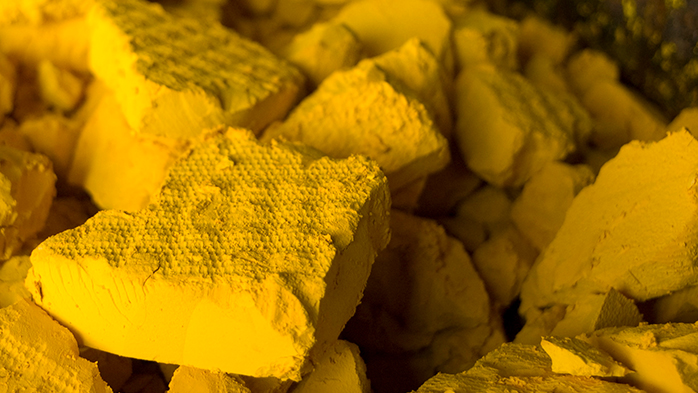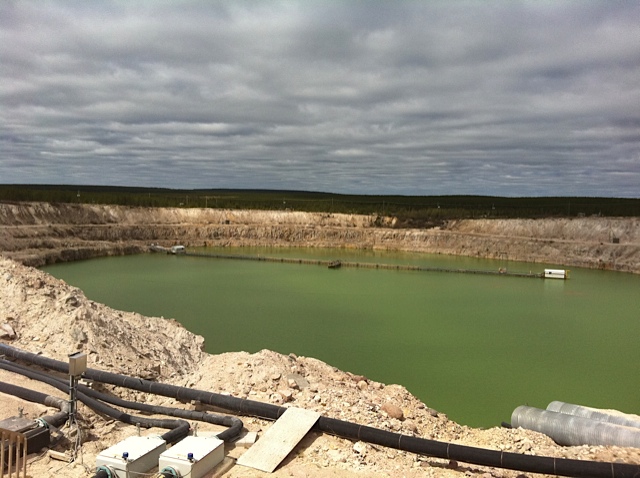A little about the sources of nuclear fuel

Spherical nuclear fuel in vacuum
'Wind power, solar power, nuclear power' - I thought. "The wind is blowing, the sun is shining ... Stop, and what's the core?" It would be interesting to know ...
Ab uranus
Now the base of nuclear fuel is uranium. The most common types of uranium in nature are the isotope with a mass of 238 and the isotope 235. In natural uranium, they are contained in a ratio of about 99.3% and 0.72%. Uranium is metal, so you have to dig it. But first we need to learn something. “Uranus is not radioactive in nature.” However, this is an exceptional opinion of Rosatom . All the others, of course, know that uranium is radioactive . However, not much. Alpha radiation (helium nuclei), although most characteristic of uranium, is retained by the skin and, in the case of external exposure, not dangerous. Beta radiation (electrons / positrons) is also there, but it is well retained by a simple cloth. Gamma-radiation (photons), although penetrating, but in our case, due to its low intensity, makes a contribution along with beta-radiation. As a result, despite the fact that uranium ore is not only uranium, let's say right away, it will not shine much.
Take a look at the decay products of uranium. They contain radon , and this is already bad news . As we all say around:
The disintegration of the nuclei of radon and its daughter isotopes in the lung tissue causes microburn.
Polonium isotopes resulting from the decay of radon are a significant source of _internal_ alpha irradiation.
The relative harmfulness of the child products of radon is more than the harmfulness of radon itself. Once in the human body, it contributes to the processes leading to cancer (bones, blood, lungs, thousands of them ...), anemia, leukemia.
Remember, radon is an important factor when working with uranium ore.
')
And finally, in itself, uranium is highly toxic . Getting him into the body by any means above the permissible rate is highly undesirable.
When ingested, uranium acts on all organs, being a general cellular poison. The molecular mechanism of action of uranium is associated with its ability to inhibit the activity of enzymes. The kidneys are primarily affected (there are protein and sugar in the urine, oliguria). In chronic intoxication, blood and nervous system disorders are possible.It is often indicated that when working with uranium, he himself delivers no worse than radon, but what effects are caused by the presence of the first, and which - the second, sometimes difficult to disassemble, so no one says for sure. We will not tempt fate and assume the worst option. Although Kurchatov just wiped his hands on a handkerchief. True story.
Uranium reserves

Uranium dioxide. Already a cake?
Before you dig, you need to know where. A significant leader in uranium reserves is Australia - 1,780 kilotons (30% of the world total). Take a look at the top five (and the percentage of world production in 2017 ):
- Australia - 30% (10%)
- Kazakhstan - 14% (39%)
- Canada - 8% (22%)
- Russia - 8% (5%)
- Namibia - 7% (7%)
If everything is correct, then there will be enough uranium on earth for about a hundred years. Not so much, but there is still at least thorium .
Mining methods

“How much curie does it take to light a light bulb?” - an old French joke
The first option . If the uranium is shallow (up to 500 m), you can use the career method. Excavators and trucks. Cheap and angry, minimum radiation. Open air helps a little from radon and uranium dust. Thus, such a career will give us no more than a couple of warrants per year. It is considered absolutely safe. The problem arises when waste production occurs. But more about that later.
The second option . It is designed for cases where the ore lies a little deeper and you have to dig a mine. As a rule, they don’t dig more than two kilometers, otherwise it’s already inefficient in price. When mining at depth, radon comes into play. It must be constantly monitored, caught, pumped out and feed fresh air to the hamsters in the mines. About the dust, too, do not forget. Tightening safety and sophisticated production mechanism increases the cost of this method compared to the first. The waste problem persists.
The third method . Method of underground leaching (MPV). Significantly different from the first two. First, a well is drilled to the uranium lodge (no deeper than 600 m). Then it begins to be fed with a solution of sulfuric acid, which binds the particles of uranium (leaching). The resulting solution is pumped to the surface and already extracted from it, and then processed, uranium. The advantages of this method are to significantly simplify the organization of the process. Accordingly, the price decreases. Hamsters with shovels are no longer needed. So the method can be applied in harsh climatic conditions. Radon and dust stop bothering us. The pumped out solution also contains a minimum of unnecessary components, which greatly simplifies the issue of radioactive contamination. In general, this method is considered promising, but it is used at about 15% of deposits for the time being.
Environmental impact

A sad example. Rio Tinto River
Sadness first regarding any minerism is AMD aka wastewater. The bottom line is that there are many sulphides in mining waste, which in the presence of water and oxygen give us sulfuric acid. In the case of abandoned underground mines, a change in water flows makes this process inevitable. Moreover, among the sulphides there are also toxic metals (copper, aluminum, arsenic, mercury). With all this joy in the river, it is no longer recommended to drink and live in it. All this is aggravated by the fact that in especially neglected cases the situation will not be corrected 'never'.
Sadness the second . After uranium is extracted from the ore, we are left with a bunch of unnecessary garbage (in solid and liquid form). It includes both radioactive elements (thorium, radium) not extracted by us, as well as incompletely collected uranium. The level of radioactivity of such wastes can reach 85% of the level of ore originally mined. If all this is simply dumped into a heap, then, as we already know, gamma radiation and constantly evolving radon (which, generally speaking, is formed from radium) can cause serious harm to the environment.
Sadness third , concerns the method of underground leaching. Using this method, we almost do not get garbage, and do not pollute the air. But the process inevitably causes groundwater pollution. Possible leakage of the working solution (ie sulfuric acid) can lead to significant changes in the geological structure, which are not always easy to predict. A serious challenge here is the protection of water sources.
Again in the bottle

One of the tailings in Canada
As we understand, waste needs to be put in one place. It is called tailing (from the English. 'Tailings' - waste). It can be just a mountain of garbage, a dam or a lake. Our primary goal is isolation from the surrounding natural hydraulic system. Those. it is important for us that the vault does not leak and not overflow. For the first, we need reliable fencing around the edges. The second requires the installation of a decanting system, plus it is desirable to take into account the amount of precipitation / evaporation in the design. After the termination of waste collection, the installation of the dome is necessary - protection from radon. As additional measures, drainage of storage, protection from soil erosion. Next - constant observation. Service life - from a minimum of 200 years to a desirable 1000 years. With what mother can stand so much, science does not dare to answer.
Projections for periods from 175 to 975 years are complicated by a high degree of uncertainty due to the lack of sufficient practical data.Accordingly, the cost of maintenance in the future is also difficult to estimate. There is evidence of primary costs when decommissioning mines . Amounts range from a few tens of millions to a couple of billion dollars. Also, there is interesting data from UMTRA about how many deaths they have prevented by their activities and how much it happened. For a hundred years it turned out ~ 1.3k lives, one million dollars in total. In general, it is clear that the task requires attention, time and money. Any significant damage to the tailings can lead to sad consequences .
Useful materials
Uranium Mining and Milling Wastes: An Introduction
Uranium Mining in Virginia (2012)
Horror stories
Scary first
Australia, mine in the Rum Jungle area
Opened in 1953, closed in 1971. The government and the mining company laid waste treatment. As a thank you, we received the only lake in Australia where there are noelephant crocodiles. What else do people want? By 1980, the government noticed that hamsters loved to bathe in radioactive waste and grabbed their heads. Remade as necessary, covered with a dome and stocked with popcorn. There was a question of a total ban on uranium mining in Australia. Agreed on the 'law of three' . But in 2009, without a declaration of war, the Minister of the Environment realized up to four. Rip
Opened in 1953, closed in 1971. The government and the mining company laid waste treatment. As a thank you, we received the only lake in Australia where there are no
Scarecrow Two
Republic of Niger, the city of Arlit
African country. It ceases to be a colony of France in 1960. In 1968, the French returned with the desire to develop uranium, promising to turn the nearest city into Le Petit Paris . The naive aborigines cannot refuse their former friends, they grab shovels and run into the mines in their shorts. The country is breaking out in the top of uranium mining, the French concern ( Areva in its time) is in the top leaders of the nuclear industry. When resorted green, it's all over now. Radioactive background is hundreds of times higher than normal, blacks are dying of cancer, the country is one of the poorest in the world. In 2008, Areva is nominated for anti-Oscar. Fin.
African country. It ceases to be a colony of France in 1960. In 1968, the French returned with the desire to develop uranium, promising to turn the nearest city into Le Petit Paris . The naive aborigines cannot refuse their former friends, they grab shovels and run into the mines in their shorts. The country is breaking out in the top of uranium mining, the French concern ( Areva in its time) is in the top leaders of the nuclear industry. When resorted green, it's all over now. Radioactive background is hundreds of times higher than normal, blacks are dying of cancer, the country is one of the poorest in the world. In 2008, Areva is nominated for anti-Oscar. Fin.
Terrifka third
Finally, a link to an article about the fate of abandoned uranium deposits in Central Asia. Character monoposilny. 'You need loot.'
In 2012, [] money was allocated for the recultivation of four uranium tailings in Central Asia. Implemented the program []. It was calculated for six years, that is, until 2018, and spent on it $ 38.5 million. Reclamation was supposed to go [].
Source: https://habr.com/ru/post/456158/
All Articles